Samsung Odyssey OLED G8 (G85SB) with 34″ QD-OLED Panel and 175Hz Refresh Rate
Originally published 4 January 2022, last updated 1 September 2022
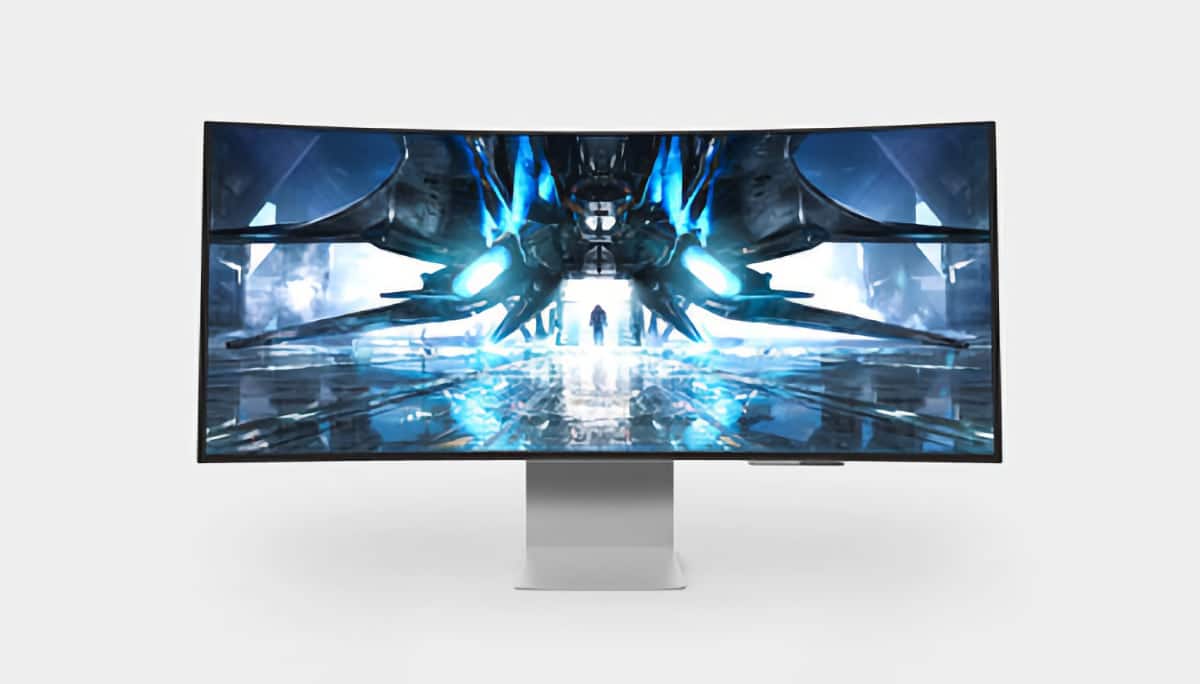
We first brought you news of this screen back at CES 2022 in January where it was teased on the CES press release pages, but never formally announced by Samsung. It’s been quiet ever since, with only a few bits of information trickling out, but this week Samsung have finally announced this screen and showcased it at IFA 2022 in Berlin. The Samsung Odyssey OLED G8 (model name G85SB) as it is now being called (previously the G8QNB) is the company’s first QD-OLED (Quantum Dot OLED) gaming monitor, measuring in at 34″ in size and offering a 3440 x 1440 resolution and a 175Hz refresh rate. Samsung were promoting this as the “World’s first” back at CES in January, but at the same time Dell announced their Alienware AW3423DW display based on the same panel and with largely the same specs, which was also promoted as the World’s first. Of course Dell have already released the Dell Alienware AW3423DW which we’ve reviewed already.
Original CES Award page information
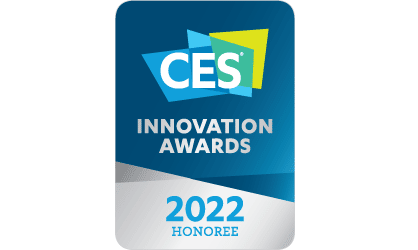
We first heard about this new screen from the CES Innovation Award page which said “the ultra-slim Samsung Odyssey G8QNB 34” Gaming Monitor will be the world’s first Quantum Dot OLED (QD-OLED) gaming monitor, offering the best of both QLED and OLED screen technology. With high-performance features like a 175Hz refresh rate and 0.1ms response time, Odyssey G8QNB will give gamers a competitive edge. The 1800R curvature offers an immersive experience of this ultra-wide quad high definition (UWQHD) resolution display with vivid colours. It’s also the world’s slimmest gaming monitor, being as thin as 5.9mm, allowing it to fit in with any gaming setup, while also offering smart features around gaming, entertainment and productivity.”
So this original announcement confirmed:
- 34″ ultrawide format, 21:9 aspect ratio
- QD-OLED panel technology
- 1800R curvature
- Super thin profile, as thin as 5.9mm in places thanks to the QD-OLED panel and no need for a backlight
- 3440 x 1440 resolution
- 0.1ms response time (realistic for an OLED panel)
- 175Hz native refresh rate
IFA 2022 updates – Samsung Odyssey OLED G8 Specs

We know a bit more about the screen now from Samsung’s announcement and showcase at IFA in Berlin during September 2022. As well as the specs listed above the screen has a 10-bit colour depth and a wide colour gamut covering 99.3% of the DCI-P3 colour space.
Peak brightness for HDR is not yet listed but is likely to be 1000 nits in line with the Samsung QD-OLED panel and with Dell’s screen. Being based on an OLED technology panel this also means that it can offer per pixel level local dimming, producing excellent results for HDR content, and avoiding issues with blooming and halos that you get on even the best FALD/Mini LED backlit LCD displays. You can expect true blacks as the pixels can literally be turned off individually, producing extremely impressive contrast ratios. The screen is also VESA DisplayHDR 400 True Black Certified and supports HDR 10 content.

The panel has burn-in protection in the form of Real-time ISC (Image Sticking Correction) and Samsung Display claims that the burn-in risk is lower with QD-OLED than with LG Display’s WOLED. Little additional information is provided for this feature at the moment.
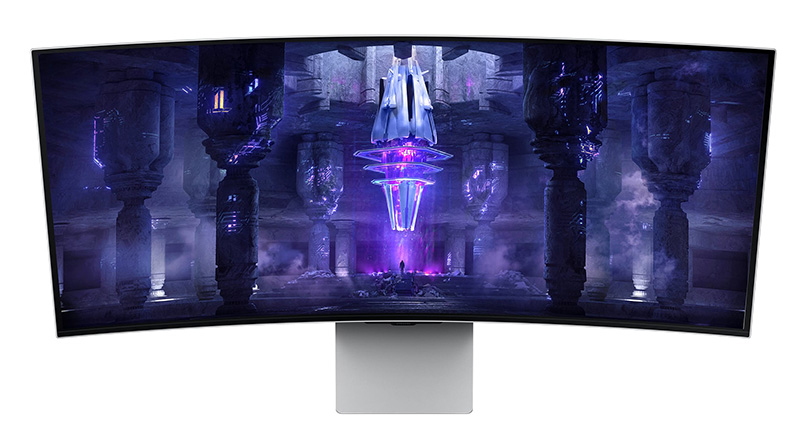
We know now as well that the screen will offer 1x Mini DisplayPort 1.4 , USB type-C (DP Alt mode and power delivery not confirmed yet) and Micro HDMI 2.1 connectivity although we’re not sure how many of the latter will be included. The screen does not use a Native NVIDIA G-sync module like Dell’s screen does, allowing for support of these alternative video interfaces, including HDMI 2.1. Whether or not this has an impact on gaming experience and VRR performance is not yet clear. The screen is certified under the AMD FreeSync Premium scheme though.
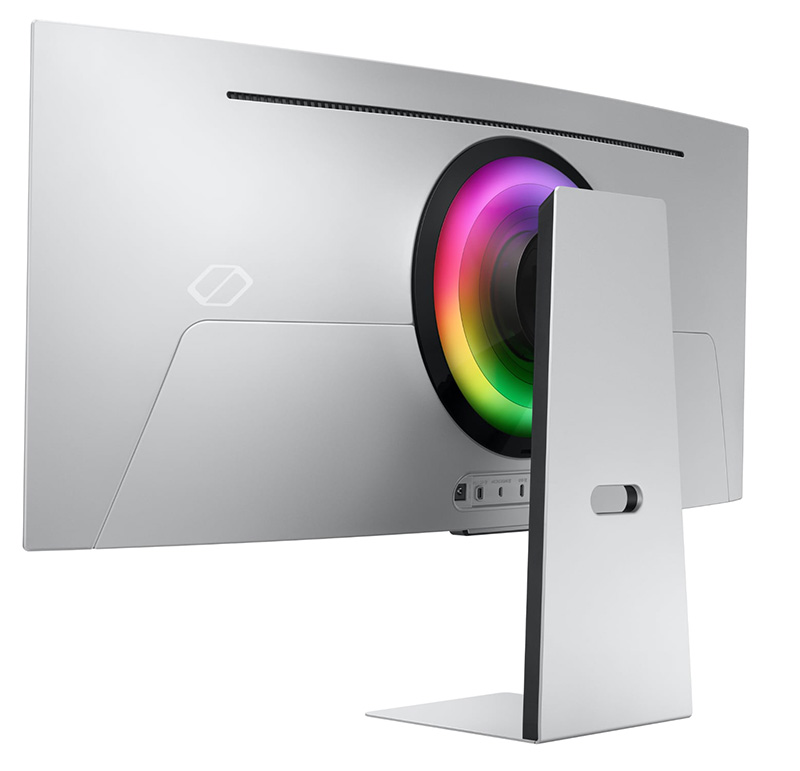
There are also integrated 5W speakers, CoreSync and Core Lighting+ RGB lighting technology on the back, and a stand with tilt and height adjustments. The styling of the screen is quite “Apple-like” too and looks sleek and attractive.
Smart Hub, IoT hub and Gaming Hub included
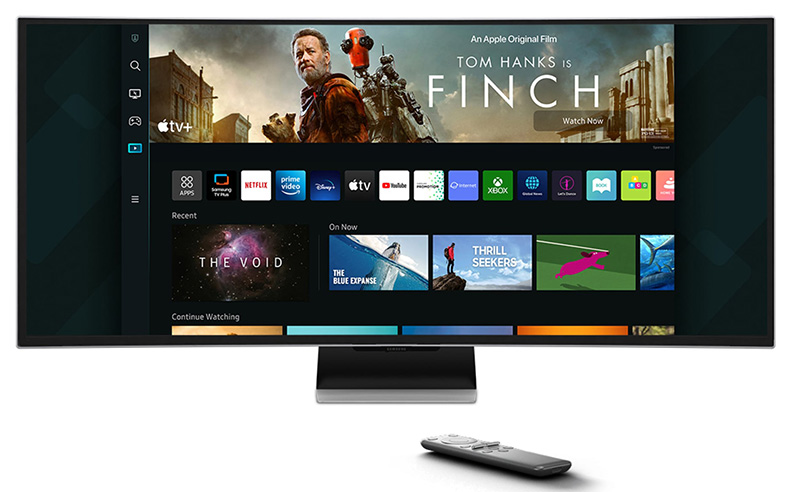
The Odyssey OLED G8 also enables users to experience the best of gaming, entertainment and lifestyle features all in one place. The display operates as a complete entertainment hub with the ability to stream content through Samsung’s Smart Hub, giving access to the latest shows on Amazon Prime, Netflix, YouTube and other leading OTT (over-the-top) service providers, even without a connection to a PC or mobile device. In addition, users can enjoy free live content without the need for downloads or sign-ups, made possible by Samsung TV Plus.
The integrated IoT hub allows the users to check all the IoT devices wirelessly connected to the monitor, while the SmartThings app allows users to monitor IoT devices throughout the house with ease. The app’s intuitive control panel can help monitor and adjust settings such as temperature and humidity.
Interestingly the screen also includes Samsung’s “Gaming Hub” which allows support for cloud gaming for users in certain regions (Brazil, Canada, France, Germany, Italy, Korea, Spain, US, UK). At the moment the following gaming apps are available: Xbox, GeForce Now, Google Stadia, Utomik, and Amazon Luna (U.S. only) via the cloud. This capability is powered by Samsung’s advanced game streaming technology for smooth visuals and responsive gameplay, all with no downloads or storage space requirements.
What is QD-OLED?

Last year in August we brought you details about this emerging panel technology from Samsung, a rival to the common OLED panels produced by LG.Display and used across the OLED TV market. Samsung’s QD-OLED (Quantum Dot OLED) uses organic OLED material as the light source and Quantum Dot (QD) material as a film. It will be more similar to Samsung’s own AMOLED used for mobile phones and LG’s OLED TVs and will mark the company’s return to the OLED segment.
Quantum Dots are very small semiconductor crystals that emit their own light, they create a wider variety of colors at wider angles. You might be familiar with QD technology being used in the desktop monitor market where a special coating (Quantum Dot coating) is often added to an LCD backlight to provide enhanced colours and wide colour gamut. In Samsung’s QD Display tech these are combined with a blue self-luminescent OLED layer (can also be Micro LED in the future), without the need for a backlight, allowing for the creation of rich colours and pixel level lighting and dimming capabilities. Benefits include:
- Super fast response times
- Pixel level dimming
- True Blacks and 1 million:1 contrast ratio
- Images that feel brighter than they actually are
- Reduction of harmful blue light
- Wide colour gamut and volume
- Wide Viewing Angles
- Anti Reflection Coating
More information about all the features of this technology can be found in our previous article here.
Availability and Pricing
The Samsung Odyssey G85SB is expected to be released in Q4 2022 and is likely (but not confirmed) to be around a similar retail price to Dell’s alternative which is ~$1300 USD. Further details to follow when we get them.
Original Source: CES Innovation Award page
Update IFA 2022: Samsung
We may earn a commission if you purchase from our affiliate links in this article- TFTCentral is a participant in the Amazon Services LLC Associates Programme, an affiliate advertising programme designed to provide a means for sites to earn advertising fees by advertising and linking to Amazon.com, Amazon.co.uk, Amazon.de, Amazon.ca and other Amazon stores worldwide. We also participate in a similar scheme for Overclockers.co.uk, Newegg, Bestbuy , B&H and some manufacturers.
Stay up to date
 |  |  |  |
| Browser Alerts | Follow on X | Subscribe on YouTube | Support Us |
All the latest news from CES
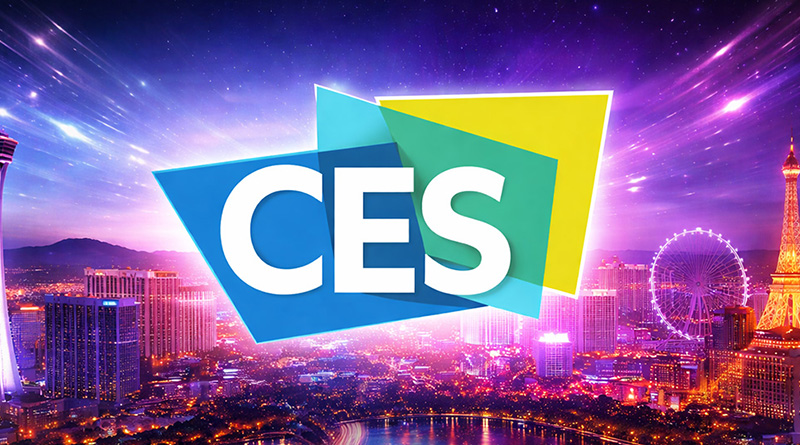
Popular Trending News
 LG Announce the 32GX870B, Their First 32″ 4K Tandem WOLED Monitor December 31, 2025 LG have released some details about another new monitor that will be launched in 2026 and showcased at CES next week. The 32GX870B is a 32″ sized screen with a 3840 x 2160 “4K” resolution and 240Hz native refresh rate,…
LG Announce the 32GX870B, Their First 32″ 4K Tandem WOLED Monitor December 31, 2025 LG have released some details about another new monitor that will be launched in 2026 and showcased at CES next week. The 32GX870B is a 32″ sized screen with a 3840 x 2160 “4K” resolution and 240Hz native refresh rate,… MSI Announce Two New 32″ 4th Gen QD-OLED Monitors with DarkArmor Film January 1, 2026 Originally Published 31 December 2025, last updated 1 January 2026 MSI have today announced two new 32″ 4K 240Hz monitors in their QD-OLED line-up ahead of CES 2026 next week. Both the MPG 322UR QD-OLED X24 and MAG 321UP QD-OLED…
MSI Announce Two New 32″ 4th Gen QD-OLED Monitors with DarkArmor Film January 1, 2026 Originally Published 31 December 2025, last updated 1 January 2026 MSI have today announced two new 32″ 4K 240Hz monitors in their QD-OLED line-up ahead of CES 2026 next week. Both the MPG 322UR QD-OLED X24 and MAG 321UP QD-OLED… Asus Unveil the ROG Swift PG27UCWM with a 27″ 4K Tandem WOLED Panel and RGB-stripe Pixel Layout January 4, 2026 Asus teased the arrival of this screen recently on their social media channels and we can now unveil official information about this exciting new OLED monitor that will be on show at CES this week. The ROG Swift PG27UCWM is…
Asus Unveil the ROG Swift PG27UCWM with a 27″ 4K Tandem WOLED Panel and RGB-stripe Pixel Layout January 4, 2026 Asus teased the arrival of this screen recently on their social media channels and we can now unveil official information about this exciting new OLED monitor that will be on show at CES this week. The ROG Swift PG27UCWM is… Samsung Display Announce Mass Production of New 34″ QD-OLED Panel with V-Stripe Sub-Pixel Layout January 1, 2026 Panel manufacturer Samsung Display have announced the mass production of the world’s first 34″ ultrawide 360Hz QD-OLED panel, featuring what they are referring to as a “V (Vertical)-Stripe” pixel structure. This will offer a true RGB-stripe layout to improve text…
Samsung Display Announce Mass Production of New 34″ QD-OLED Panel with V-Stripe Sub-Pixel Layout January 1, 2026 Panel manufacturer Samsung Display have announced the mass production of the world’s first 34″ ultrawide 360Hz QD-OLED panel, featuring what they are referring to as a “V (Vertical)-Stripe” pixel structure. This will offer a true RGB-stripe layout to improve text… Asus ROG Swift PG34WCDN Unveiled with 34″ 360Hz 5th-Gen QD-OLED Panel January 4, 2026 Asus have announced today their new ROG Swift PG34WCDN OLED monitor, featuring Samsung Display’s brand-new 5th-Gen QD-OLED panel that we saw announced a few days ago. It’s a 34” ultrawide monitor with a subtle 1800R curvature and offering a 3440…
Asus ROG Swift PG34WCDN Unveiled with 34″ 360Hz 5th-Gen QD-OLED Panel January 4, 2026 Asus have announced today their new ROG Swift PG34WCDN OLED monitor, featuring Samsung Display’s brand-new 5th-Gen QD-OLED panel that we saw announced a few days ago. It’s a 34” ultrawide monitor with a subtle 1800R curvature and offering a 3440…
